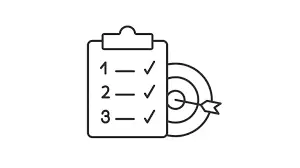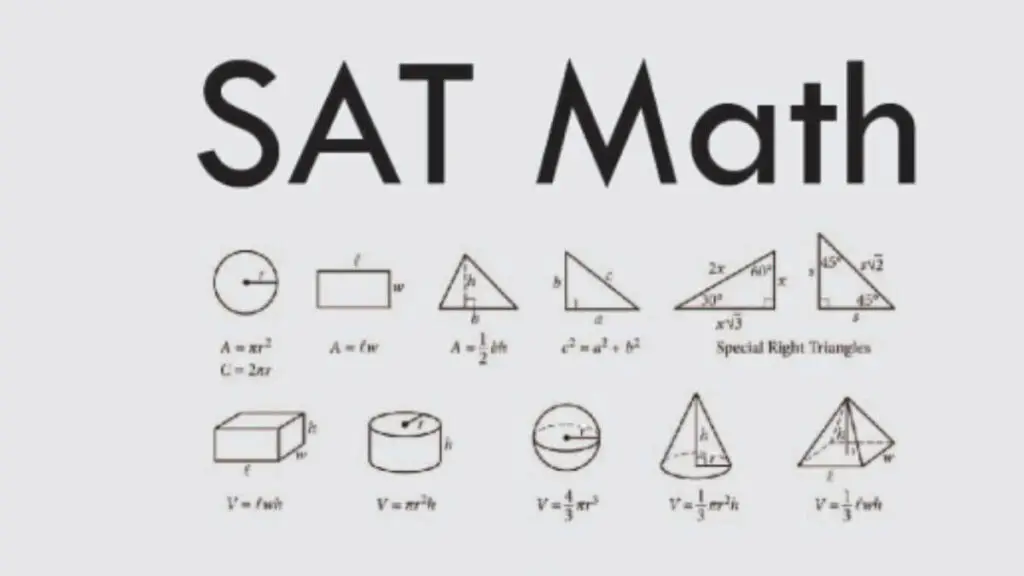Understanding the Digital SAT Writing and Language Test
Table of Contents
The SAT Writing and Language Test is designed to assess a student’s ability to revise and edit written texts, focusing on grammar, punctuation, style, and rhetorical skills. On the digital SAT Writing and Language Test, this test remains largely unchanged in terms of content, but its format now requires interaction with a digital interface. The SAT Writing and Language Test is crucial for students aiming for a strong performance on the SAT.

The SAT Writing and Language Test measures how well a student can apply English language conventions in real-world contexts. In this article, we’ll break down the various components of the SAT Writing and Language Test, give a brief overview of its format, and provide practice questions with detailed explanations to help you excel in the SAT Writing and Language Test.
Overview of the SAT Writing and Language Test
The SAT Writing and Language Test consists of 44 multiple-choice questions, divided into four sections, each based on a passage. These passages cover a wide range of topics, such as historical documents, social science texts, humanities, and sciences. Each passage is followed by a set of questions that assess the student’s ability to:
- Correct errors in sentence structure, punctuation, and grammar.
- Revise sentences for clarity and conciseness.
- Ensure the tone and style of the passage align with the intended purpose.
- Understand how to improve the overall organization and effectiveness of a text.
Test takers have 35 minutes to complete this section, meaning each question is to be answered in just under a minute. While it is important to read the questions carefully, practicing speed and accuracy is crucial.
Understanding the SAT Writing and Language Test is vital for achieving a high score. Familiarize yourself with the types of questions on the SAT Writing and Language Test to improve your performance.
Types of Questions
- Sentence Structure and Grammar: These questions assess a student’s knowledge of English grammar rules, including subject-verb agreement, parallelism, and pronoun usage.
- Punctuation: These questions focus on the proper use of commas, semicolons, colons, dashes, and other punctuation marks.
- Word Choice and Tone: Questions in this category examine the effectiveness of word choice, including how specific words can improve clarity, tone, and style.
- Organization and Structure: These questions assess how well the ideas in a passage are structured, and whether rearranging sentences would improve the clarity or flow.
Practice Questions
Below are seven practice questions for the SAT Writing and Language Test, along with detailed explanations of the correct answers. Practicing with these questions will enhance your skills in tackling the SAT Writing and Language Test.
Question 1: Grammar and Sentence Structure
Passage Excerpt:
Despite the fact that the new law was intended to reduce the number of people without health insurance, there are still many who cannot afford to pay for medical services.
Question:
Which of the following is the most effective revision of the underlined portion of the passage?
A) there still many who
B) there are still many who
C) still there are many who
D) there are still many whom
Answer:
B) there are still many who
Explanation:
Option B is the most grammatically correct and concise. “There are still many who” is the standard structure for this sentence. Option A is missing the verb “are,” which makes it incomplete. Option C places the adverb “still” in a less natural position. Option D incorrectly uses “whom” instead of “who.” “Whom” is used as an object, not a subject.
Question 2: Punctuation
Passage Excerpt:
The committee reviewed the proposal carefully, it made several suggestions for improvement.
Question:
Which of the following corrections should be made to the sentence?
A) Insert a semicolon after “carefully.”
B) Insert a comma after “carefully.”
C) Change “it” to “they.”
D) No change is needed.
Answer:
A) Insert a semicolon after “carefully.”
Explanation:
A semicolon is needed to separate two independent clauses: “The committee reviewed the proposal carefully” and “it made several suggestions for improvement.” The sentence is a compound sentence, so a semicolon is required. A comma would create a comma splice, which is incorrect. Changing “it” to “they” changes the subject unnecessarily and would be incorrect unless the committee was plural, which is not specified.
Question 3: Sentence Structure and Clarity
Passage Excerpt:
The study was difficult to conduct, but with careful planning, researchers managed to complete it in time, the results were significant.
Question:
Which revision would improve the clarity of the sentence?
A) The study was difficult to conduct, but with careful planning, the researchers managed to complete it on time; the results were significant.
B) The study was difficult to conduct, but with careful planning the researchers managed to complete it in time. The results were significant.
C) The study was difficult, but it was planned carefully enough for the researchers to complete it in time. The results were significant.
D) The study was difficult to conduct, but with careful planning the researchers managed to complete it in time the results were significant.
Answer:
A) The study was difficult to conduct, but with careful planning, the researchers managed to complete it on time; the results were significant.
Explanation:
Option A uses a semicolon to correctly join the two independent clauses, which improves the clarity. The phrase “in time” is also better expressed as “on time,” which is more natural. Option B separates the two ideas but doesn’t join them correctly. Option C introduces unnecessary changes to the wording, which affects clarity. Option D contains a comma splice, which is incorrect.
Question 4: Word Choice
Passage Excerpt:
The students quickly completed their assignments, making the entire process efficient and less time-consuming.
Question:
Which word or phrase should be substituted for “less time-consuming” to improve the sentence’s clarity?
A) more efficient
B) faster
C) more effective
D) less effortful
Answer:
B) faster
Explanation:
“Faster” is the best choice because it directly conveys the idea of completing the task more quickly. The phrase “less time-consuming” is somewhat vague and wordy. While “more efficient” is a possible alternative, it doesn’t specifically convey the speed aspect that “faster” does.
Question 5: Consistency and Pronoun Agreement
Passage Excerpt:
Each of the students must submit their assignment by the end of the week.
Question:
Which of the following corrections should be made to the sentence?
A) Change “Each” to “All.”
B) Change “their” to “his or her.”
C) Change “their” to “its.”
D) No change is needed.
Answer:
B) Change “their” to “his or her.”
Explanation:
The pronoun “their” does not agree in number with the singular noun “each.” The correct pronoun is “his or her” to maintain singular agreement. Option A is incorrect because “all” changes the meaning of the sentence. Option C is incorrect because “its” would refer to a thing, not people.
Question 6: Organization and Sentence Flow
Passage Excerpt:
The park was full of people, it was a sunny day, and everyone was enjoying the weather.
Question:
Which revision improves the flow and organization of the sentence?
A) The park was full of people because it was a sunny day, and everyone was enjoying the weather.
B) The park was full of people, and it was a sunny day; everyone was enjoying the weather.
C) Everyone was enjoying the weather because it was a sunny day, and the park was full of people.
D) The park was full of people and the weather was sunny, so everyone was enjoying it.
Answer:
B) The park was full of people, and it was a sunny day; everyone was enjoying the weather.
Explanation:
Option B maintains the clarity of the original idea while improving the flow by correctly separating the independent clauses with a semicolon. Option A introduces unnecessary causality. Option C changes the sentence structure in a way that loses focus on the key ideas. Option D uses awkward phrasing.
Question 7: Redundancy and Conciseness
Passage Excerpt:
The teacher gave a very large amount of homework, and the homework was excessive.
Question:
Which revision eliminates redundancy?
A) The teacher gave excessive homework.
B) The teacher gave a lot of homework, and the homework was excessive.
C) The teacher gave a large amount of homework, which was unnecessary.
D) The teacher gave a lot of excessive homework.
Answer:
A) The teacher gave excessive homework.
Explanation:
Option A eliminates the redundancy of saying both “a very large amount of homework” and “excessive.” It keeps the sentence concise while maintaining the intended meaning. The other options either repeat unnecessary words or do not improve conciseness.
Top Tips for SAT Writing and Language Test

1. Read the Passage, Then the Questions
- Tip: Start by reading the passage first, then review the questions. This helps you understand the context and what the questions are asking. It will also give you a better idea of the main points and potential issues in the passage that the questions will address.
- Why: Reading the passage first gives you context, so when you tackle the questions, you can quickly identify where changes need to be made.
2. Focus on Clarity and Conciseness

- Tip: The test favors answers that make sentences clearer and more concise. Look for wordy or redundant phrases and remove unnecessary words.
- Why: In many cases, the best answers improve clarity, eliminate wordiness, and make the sentence easier to read. Simplify wherever possible.
3. Look for Grammar and Punctuation Errors
- Tip: Be on the lookout for common grammar issues like subject-verb agreement, pronoun clarity, punctuation mistakes, and sentence fragments.
- Why: These errors are often tested directly, and fixing them will increase your score. Pay close attention to subject-verb agreement and proper punctuation, as these are frequent sources of mistakes.
4. Master Commonly Tested Rules

- Tip: Familiarize yourself with the most frequently tested grammar rules, such as:
- Subject-verb agreement
- Pronoun-antecedent agreement
- Comma usage (especially in compound sentences and with nonessential clauses)
- Parallel structure
- Correct use of semicolons and colons
- Why: Many questions on the test focus on these rules, and having them committed to memory will allow you to answer faster and more accurately.
5. Don’t Overthink It

- Tip: Stick to standard grammar rules. You may encounter questions with complex wording, but the correct answer will almost always follow the most straightforward, standard grammar convention.
- Why: Overcomplicating answers or second-guessing yourself can waste valuable time. Trust your knowledge of basic grammar rules.
6. Pay Attention to the Tone
- Tip: Ensure the tone of the passage is consistent. If the passage is formal, make sure your revisions match that tone, avoiding overly casual or informal language.
- Why: The SAT Writing and Language Test often includes questions about maintaining the tone and style of the writing. Look for clues in the text to determine whether to choose a formal or informal phrasing.
7. Avoid Common Traps
- Tip: Beware of answer choices that seem grammatically correct but create awkward or redundant sentences. Some answer choices may look good but introduce errors or overcomplications.
- Why: The SAT sometimes includes tricky answer choices that look right on the surface but do not work within the context of the passage.
8. Take Your Time on the First Pass
- Tip: On the first pass, don’t rush. Focus on getting the correct answer, and only second-guess if you’re completely unsure. Skipping around too much can cause unnecessary confusion.
- Why: Ensuring that you’re making the right choices in the first pass is more valuable than rushing. Once you have your first pass completed, if time permits, go back and review questions that you were unsure about.
9. Practice with Timed Sessions
- Tip: Practicing under timed conditions will help you build speed and familiarity with the test format. Make sure you’re practicing with full-length practice tests to simulate test-day conditions.
- Why: This helps build stamina and the ability to make quick decisions under time pressure, which is critical for completing the test on time.
10. Eliminate Wrong Answer Choices
- Tip: When unsure about a question, eliminate obviously wrong choices first. Narrowing down your options increases your chances of selecting the correct answer.
- Why: Even if you’re uncertain about a question, narrowing down the options can help you choose the best one, especially since you can eliminate clearly incorrect choices.
11. Understand the Question Types
- Tip: Familiarize yourself with the four main types of questions:
- Sentence Structure: Grammar, punctuation, and sentence construction.
- Word Choice and Diction: Choosing the most appropriate word for tone and clarity.
- Organization: Rearranging sentences or improving coherence and clarity.
- Style and Effectiveness: Improving tone, word choice, or the logical flow of the passage.
- Why: Recognizing the type of question helps you know what to look for in the passage, saving you time and effort.
12. Take Note of Transitions and Cohesion
- Tip: Many questions test how well sentences or paragraphs transition. Look for signal words like “however,” “therefore,” and “for example,” which indicate logical relationships between ideas.
- Why: The SAT values well-organized and logically connected writing. Recognizing poor transitions or lack of cohesion can help you identify the right answer.
13. Trust Your First Instinct
- Tip: Often, your first instinct is correct. If you’re unsure of an answer, choose the one that you initially thought was right, especially if it aligns with the grammar and style rules you’ve practiced.
- Why: The SAT is designed to test your ability to apply rules quickly and accurately. Your first choice is often the best one, especially if it fits standard grammar conventions.
14. Keep an Eye on Sentence Variety
- Tip: The test often rewards variety in sentence structure. Look for opportunities to break up overly long sentences or combine choppy ones, ensuring that the writing flows well.
- Why: Varied sentence structures make the writing more engaging and easier to read, so the test might ask you to revise for this balance.
15. Review and Practice
- Tip: Regular practice is key. The more you practice with real SAT questions and review explanations for mistakes, the more prepared you’ll be on test day.
- Why: Practice builds familiarity with the test format and the types of questions, and reviewing your mistakes helps you learn and avoid making them again.
Conclusion
To succeed in the SAT Writing and Language Test, consistent practice is essential. Make sure to explore various resources that offer practice materials tailored to the SAT Writing and Language Test.
For more information about the SAT Writing and Language Test, visit our dedicated section on tips and resources specifically aimed at helping you prepare for the SAT Writing and Language Test.
The SAT Writing and Language Test requires a strong understanding of grammar, sentence structure, punctuation, and clarity. By practicing with the types of questions outlined above, students can improve their editing and revising skills, making them better prepared for the test. In addition to understanding the rules of grammar and style, it is important to practice reading the questions carefully and efficiently selecting the most concise and effective answer.
For more about sat Writing and Language Test, click




